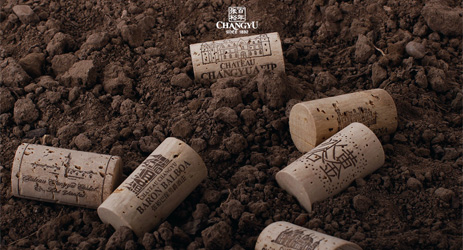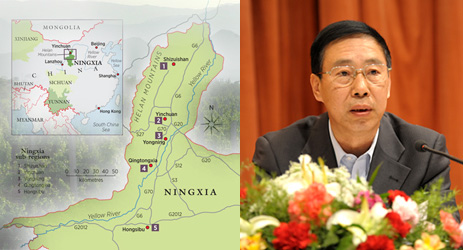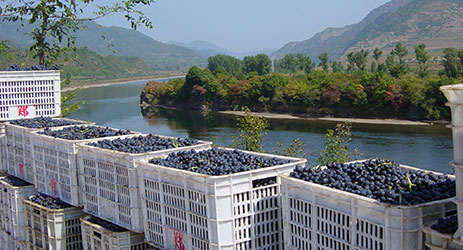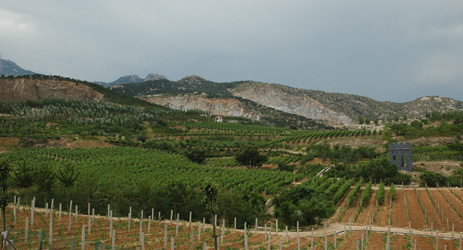Yi Fenghuang, Director of Yantai Grape and Wine Bureau, spoke to DecanterChina.com about the historic wine region’s unique features, the challenges faced, and plans for the future.
In 1892, Zhang Bishi established Changyu, China’s very first modern wine producing company, in Yantai, Shandong Province. The move started a new phase of industrialised winemaking in China.
The coastal region Yantai has witnessed the advent and development of China’s modern wine industry. In 1987, it was accepted as the first Chinese observer in the International Organisation of Vine and Wine (OIV), followed by Ningxia, which gained its observer status in 2012. Today, it remains top of the chart in Chinese domestic wine sales among all major producing regions.
Facing the challenge of imported wines, the historic region is now in a time of ‘transformation and upgrading’, which heralds another new era of Chinese domestic wine industry.

‘Standardised and mechanised’ viticulture
Situated in the east of the Shangdong province, Yantai benefits from the warm temperate continental monsoon climate, and is currently ‘the only wine region in Northern China’ that’s warm enough not to burry its vines in winter, said Yi Fenghuang, head of the region’s Grape and Wine Bureau.
Official figures show that currently there are 36,667 hectares of vines belonging to wine producers in Yantai.
‘Of all the regions explored, the Shandong peninsula showed the best potential for the production of a great wine, both for its climate and its geology,’ Olivier Richaud, technical manager of the DBR-CITIC wine estate, told DecanterChina.com in a previous interview.
Launched by Domaines Barons de Rothschild in 2012, the winery is expecting to release its first commercial vintage to the Chinese market in 2016.
Besides the usually seen varieties in Chinese vineyards such as Cabernet Sauvignon, Cabernet Gernischt, Cabernet Franc, Merlot, Syrah, Riesling, Ugni Blanc and Sauvignon Blanc, Yantai region also sees rising performances of Marselan, Petit Verdot and Petit Manseng, whose plantings are ‘rising rapidly,’ said Yi.
Though the region enjoys a mild average temperature, ‘the rainy weather in summer, less hours of sunlight and the increasing risks of grape diseases’ are the major challenges for the local producers, said Li Demei, winemaking consultant and DecanterChina.com columnist.
‘This may affect early ripening varieties,’ agreed Yi Fenghuang, adding that the rainfall decreases from late August, therefore ‘works for many mid-to-late ripening varieties.’
In an effort to raise the quality of the crop, Yantai is investing in the study of its terroir, as well as training local growers with the latest viticultural techniques. Wine growers are also encouraged to buy agricultural insurance to secure their income, Yi said.
As for the new plantings, the region is ‘putting great effort in selecting the right variety’, as well as standardise the vineyard work. More vineyard machinery is being introduced, said Yi, so that the famers can produce quality crop ‘with less human cost, and higher efficiency’.

Aiming for an even bigger-scale business
Yantai currently has more than 150 wine companies, according to official figures. In 2014, the wine production of the region constituted 28.2% of the national total, while its wine sales and profits account for 50.65% and 63.4% of all Chinese domestic wines, according to the local government.
The brand values of the top local brands Changyu and Weilong are estimated at 7.66bn CNY (US$1.24bn) and 3bn CNY ($0.48bn) respectively, said Yi Fenghuang.
Yet, the heartland of China’s industrialised winemaking is seeking for further expansion.
The Changyu International Wine City is one example, said the official. The 6-billion-CNY (0.97 billion USD)-worth project is expected to be ready for production next year, after a further 1.4 billion CNY investment on infrastructure, according to Changyu’s latest annual report.
When completed, the ‘wine city’ should serve as a hub of grape and wine R&D, production, trading and tourism, said the official. ‘The production capacity of the new estate will reach 400,000 tons (annually).’ Changyu, on the other hand, estimated the project will add 13.5 billion CNY (2.18 billion USD) to the company’s annual revenue once it’s in operation.
And the Changyu International Wine City isn’t the biggest project going on at the moment. The region is investing 9 billion CNY (1.45 billion USD) to build a ‘cluster’ of wine estates on Pula Valley, an upcoming sub-region in Laishan District. ‘In the next five years, Yantai will establish 10 clusters of wineries, each with its own special features,’ said Yi Fenghuang.

The expansion of wine estates is supported by a rising wine tourism. Many commented that in China many wine estates are organising touristic activities ‘mostly on its own’, and rarely offer any supporting services such as dining, accommodation and other entertainment.
Yantai, however, as a seaside tourist destination itself, has its ‘natural strength’ in developing wine tourism, Yi pointed out. ‘The touristy wine estates are capable of offering all-in-one services to visitors, including grape picking, winemaking experience, accommodation and catering service;’ the official said. ‘Plus, these estates are located close to the well-visited seaside tourism routes.’
These factors seem to have contributed to the region’s booming wine tourism. ‘Currently, about one million visitors come to Yantai for wine tours every year,’ said the official.
Transform towards the challenge
In recent years, a more open Chinese wine market saw a massive amount of imported wines for sale on the market, which has brought significant impact to the domestic wine industry. A recent annual report issued by Changyu showed that the company’s overall revenue and profit have decreased by 3.8% and 6.72% respectively.
The pressure from the market, said the official, ‘pushes Chinese wine producing companies to transform and upgrade, and seek to improve the quality and service in order to stay competitive’.
The local government encourages local companies to ‘think beyond the region’ by investing in domestic and overseas projects, said Yi, so as to ‘develop products that fit the needs of the mass consumers’.
The Changyu group set an example for this policy. The domestic wine giant purchased Cognac merchant house Roullet-Fransac in 2013, and have established new wineries in Ningxia, Xinjiang and Shaanxi. In 2015, the company plans to invest 1.91 billion CNY (0.31 billion USD) in 10 more projects, while the company will ‘put greater efforts in developing the lower-end market’ said its annual report.
The region will also seek to develop online sales on top of traditional channels to enhance sales, said the official. ‘We aim to become one of the leading wine e-commerce platforms in the next 3-5 years,’ said Liu Shilu, general manager of the Electronic Commerce Company of Changyu Pioneer Wine Company.

In the meantime, as one of China’s bonded port, Yantai should ‘not only serve as an important base for wine production, but also a hub for wine trade,’ Yi explained that the local government is in the process of getting wines from Yantai listed in the Bohai Commodity Exchange in Tianjin, while building a imported wine demonstration and trade centre within the region.
In addition, Yantai has recently launched an imported wine bottling and packaging base in its bonded area. The base ‘fill made-in-China bottles with imported bulk wines made within the appellation regulations and standards of the origin’, which are then sealed with barcodes and labels of the original appellation, according to the Super Wine Group, owner of the base. The group claims that the base is ‘first of its kind’ in Asia.
‘In three to five years, Yantai will form a new industry norm by combining traditional sales channels with online channels, and becoming a hub of both wine production and wine trade,’ the official concluded.
Click here to view profiles to four of the top wineries in Yantai>>

All rights reserved by Future plc. No part of this publication may be reproduced, distributed or transmitted in any form or by any means without the prior written permission of Decanter.
Only Official Media Partners (see About us) of DecanterChina.com may republish part of the content from the site without prior permission under strict Terms & Conditions. Contact china@decanter.com to learn about how to become an Official Media Partner of DecanterChina.com.









Comments
Submit